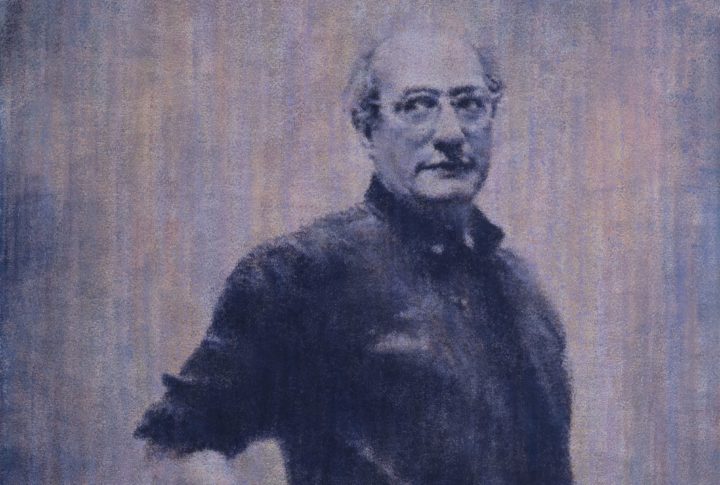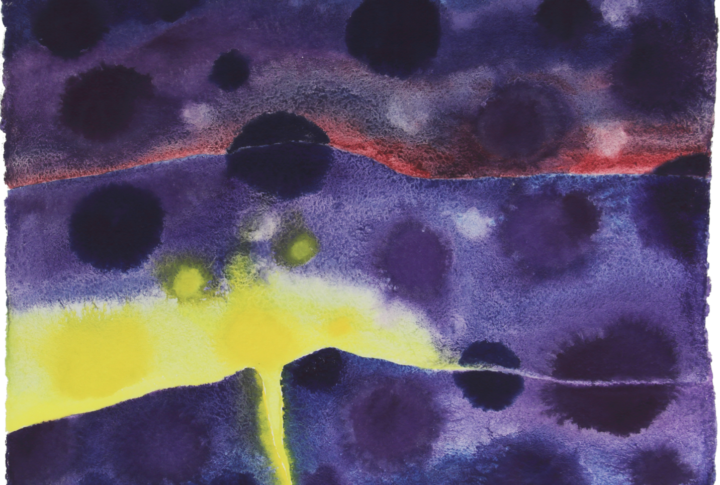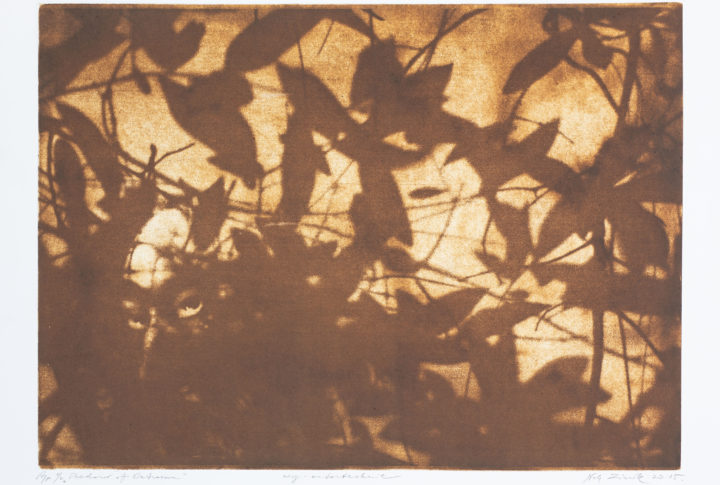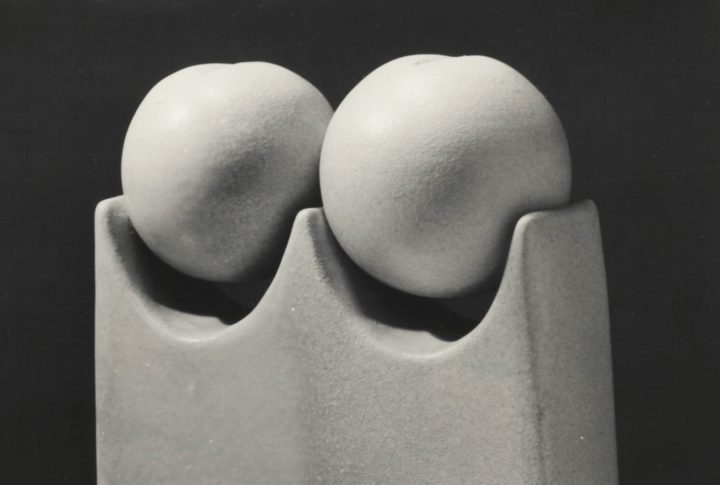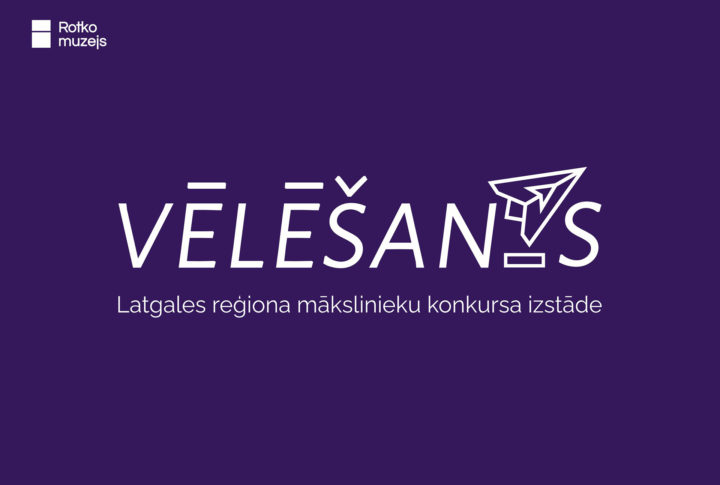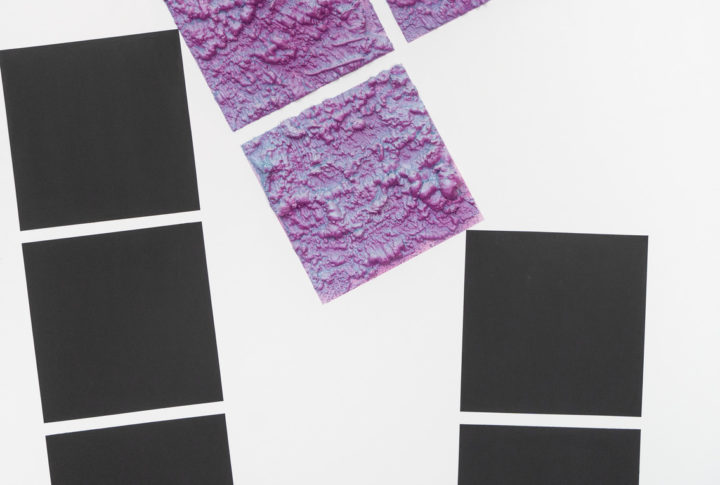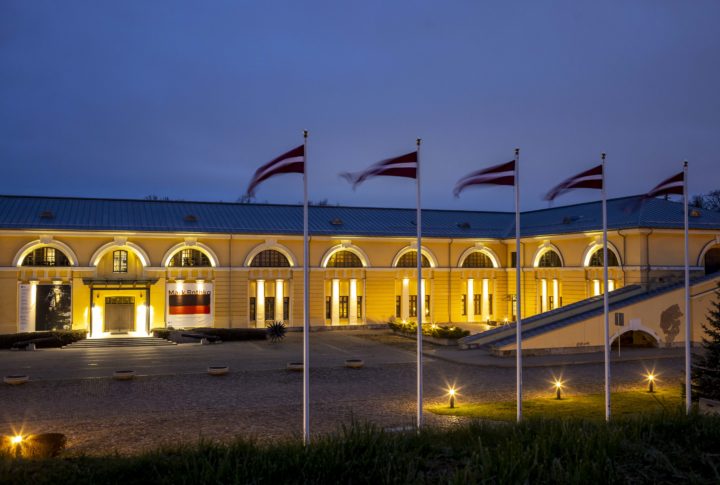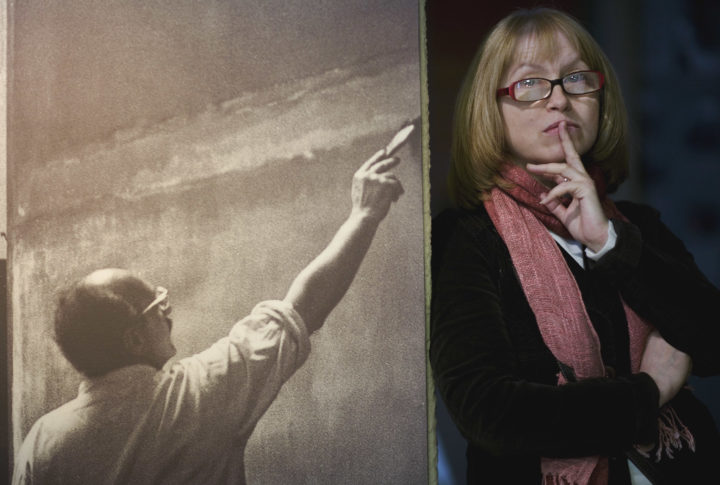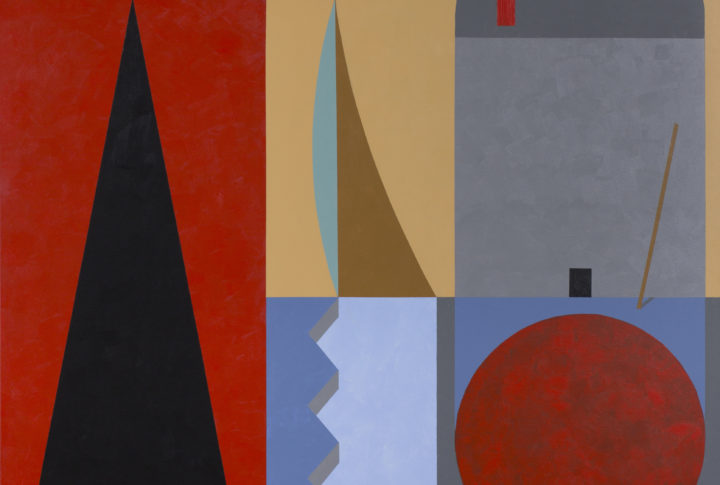Acknowledging the Value and Connectedness of Nature and Humanity: Rothko Museum Poised for Spring Exhibition Season
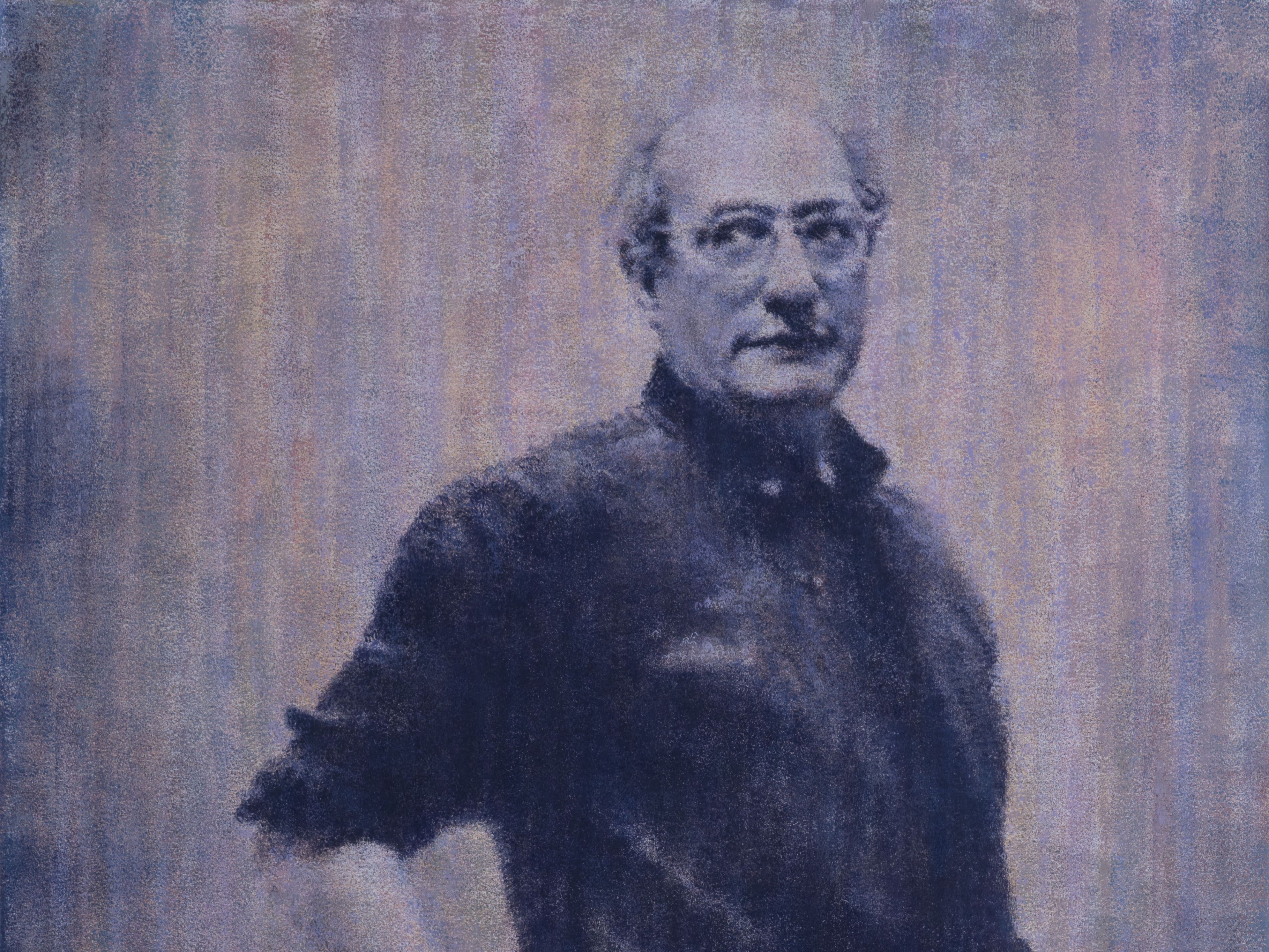
At 4 p.m. on Friday, 7 March, the Rothko Museum will inaugurate its first exhibition season of the year with six new projects where art becomes a language for celebrating our humanity and deep connectedness with nature. Alongside solo exhibitions by Ritums Ivanovs, Iveta Šmita, and Basil Alkazzi (UK, Monaco), the season’s programme includes a panorama of Latgalian art, a showcase of Latvian graphics from the Rothko Museum Collection and collaborative ceramics by Silvija Šmidkena and Leons Lukšo.
Ritums Ivanovs. Temple
After years of artistic research and collaboration with the Rothko Museum, Ritums Ivanovs (Latvia) transforms the former military arsenal now housing the museum into a Temple with four chapels, set on the very ground where Mark Rothko, the global visionary of art and thought, was born and used to live. Continuing his deep engagement with portraiture, Ivanovs presents an exhibition that provides an insight into the pages of art history through Ivanovs’ distinctive artistry and Rothko’s timeless intellectual legacy. The monumental portraits become an object reference where we discover the true, the real, and the present artist – Rothko, Rembrandt, and Ritums himself.
“The Temple is a space for self-reflection, awareness, and a direct experience of art. This exhibition – a destination for art’s pilgrims – has been created slowly, step by step, with almost sacred reverence and introspection. Moved by a long and careful reading of ‘The Artist’s Reality’, a book containing Rothko’s writings that were never published in his lifetime, Ivanovs, in his paintings, pulls back the curtain to reveal the universal tensions that all artists navigate, while also offering a glimpse into his own reality and process – the method, inspirations, and persistent dedication that built this Temple,” says Aivars Baranovskis, curator of the exhibition.
Basil Alkazzi. Museum Collection 2007–2024
The Monaco-based British artist and philanthropist Basil Alkazzi paints to celebrate the deep interconnectedness of life in all its forms. The exhibition showcases a significant collection of Alkazzi’s works dating from 2007 to 2024, now part of the Rothko Museum Collection. Inspired by the lush landscapes, flora, and skies of Monaco and the South of France and executed with an extraordinary sense of colour, light, and form, they invite the viewer to contemplate the deep interconnections between the microcosm and the macrocosm, the earthly and the divine.
The exhibition’s curator, Māris Čačka, observes: “Alkazzi’s art resonates with an inner energy that transcends the physical world. Here, the horizon is not a boundary but a passage into realms both known and unknown. The dynamism in his work, the tension between stillness and movement, mirrors the complexity of human experience and the vastness of the universe. (..) So, let the exhibition offer more than just a visual experience. Let it be an invitation to meditate on the profound beauty of the universe and our place within it.”
Iveta Šmita. Let the Forest Be a Forest
Latvian artist Iveta Šmita, from Sigulda, has developed a unique technique of painting on silk using calligraphy ink and a natural staining agent derived from alder bark, which she prepares herself. Her exhibition is an ecologically conscious statement on the problem of deforestation – a poignant issue given that, although Latvians are often considered a ‘forest nation,’ the country’s natural forest biotopes are vanishing at an alarming rate.
The exhibition also features figurative pieces inspired by the art of ballet. How does deforestation tie into classical dance? A recent national study on “Cultural Participation and Its Impact” revealed that only fourteen per cent of Latvia’s population attends opera and ballet performances. Meanwhile, the proportion of the country’s natural forests is rapidly declining, primarily due to industrial logging.
“While Latvia may theoretically boast ample forested areas, they are increasingly dominated by intensively managed monocultures, closely associated with clear-cut zones and artificially cultivated saplings. Will access to a living, diverse forest soon become the privilege of a select few, much like the appreciation of high art, such as ballet, appears to be today?” the artist asks.
Desire. Juried Exhibition from the Latgale Region
Each spring, the Rothko Museum presents the latest instalment of its annual juried exhibition conceived specifically as a platform for local talent. This time, the exhibition theme explores “Desire”. In Latvian, the word is almost perfectly homonymous with ‘election’, identical in all but one small diacritic. This linguistic nuance ties desire to political action – an apt association, given that every election involves an active interplay between our individual expectations and collective choices.
“In Latvian (and many other languages), the meanings of certain words will shift with the presence of diacritic marks. This playful duality inspired the Rothko Museum’s challenge to the artists of Latgale for the 2025 edition of its annual juried exhibition. The theme invites the artists to engage with present-day concerns in the language of art while staying mindful of our personal and collective hopes and visions for the future,” sums up Tatjana Černova, the exhibition’s curator.
The exhibition jury reviewed 87 applications and selected 49 artists whose creativity unfolds in different media – from painting, printmaking, and ceramics to textile, multimedia art, and installation. Their work paints a compelling panorama of the region’s art today.
Selection. Latvian Graphics in the Rothko Museum Collection
From its inception, the Rothko Museum has been committed to expanding its Contemporary Graphic Art Collection, with a dedicated focus on Latvian artists. This collection has evolved through the museum’s annual graphic art symposium and generous donations or strategic purchases after successful solo exhibitions by graphic artists.
The exhibition celebrates eighteen distinguished figures in domestic graphic art, bringing together established masters and the younger cohort of the medium’s practitioners. In this, it throws a metaphoric bridge from past to present, with each selected piece a testament to the enduring power of artistic expression. The concept of selection is compellingly articulated by Māris Čačka, the Rothko Museum Director: “More than a simple compilation, this carefully curated set is both an intellectual statement and emotional decision highlighting the unmistakable creative voice of every featured artist while inviting viewers to explore the rich and stunningly diverse collective landscape of Latvian graphic art. In doing so, we shine a spotlight on the Rothko Museum’s collection and celebrate the individual creative spark of every featured artist.”
Silvija Šmidkena & Leons Lukšo. Constructive Dialogue
Showcasing works from the collection of the Latvian National Museum of Art, the exhibition invites the viewer into the shared creative world of Silvija Šmidkena (1935–2024) and Leons Lukšo (1930–1984) – two major figures in Latvian professional ceramics since the 1960s, partners in art and life. Their collaborative pieces, created between 1965 and 1984, reflect a unique artistic dialogue shaped during Lukšo’s years at the iconic Ķīpsala Ceramics Studio, a legendary hub of ground-breaking creative innovation for some of Latvia’s finest ceramic artists. In the couple’s creative interchange, Šmidkena’s sensitivity to nature and pursuit of emotional depth blends seamlessly with Lukšo’s minimalist approach to structured geometric form to produce striking artworks that emphasise the intricate dynamic between the artist and the viewer.
On view at the Rothko Museum’s Martinsons House, the exhibition draws parallels between the legacy of the distinguished Latvian ceramicist Pēteris Martinsons (1931–2013) and the artistic explorations of his colleagues and contemporaries.
Exhibition Dates and Opening Night
The Rothko Museum’s spring season runs from 7 March to 18 May 2025. Two exhibitions – “Selection: Latvian Graphics in the Rothko Museum Collection” and “Constructive Dialogue” by Šmidkena and Lukšo – will close a week earlier, on 11 May.
Admission is free on opening night.
The Rothko Museum’s spring exhibition season was prepared in partnership with the Latvian National Museum of Art and the Latvian Centre for Contemporary Ceramics. The season’s programme is supported by the State Culture Capital Foundation of Latvia, the Daugavpils City Council, the Basil Alkazzi Acquisitions Fund, Devona, and Caparol.
Publicity images:
Ritums Ivanovs. “Temple. Rothko. Pink”. Acrylic on canvas. 200 x 170 cm, 2024/5 (detail). Photo by Jānis Deinats.
Basil Alkazzi. “Transmigration II”. Gouache on paper. 58 x 79 cm. 2016.
Iveta Šmita. “Piece I” from the “Forest” series. Author’s original technique: calligraphy ink on silk and linen. 70 x 50 cm (detail). 2025.
Nele Zirnīte. “Autumn Shadows”. Etching and linocut on paper. 50 x 65 cm. 2015.
Silvija Šmidkena & Leons Lukšo. From the “Constructive Shapes” series. H – 29 cm (detail). Clay, glaze. 1973.
“Desire”. Publicity banner.

